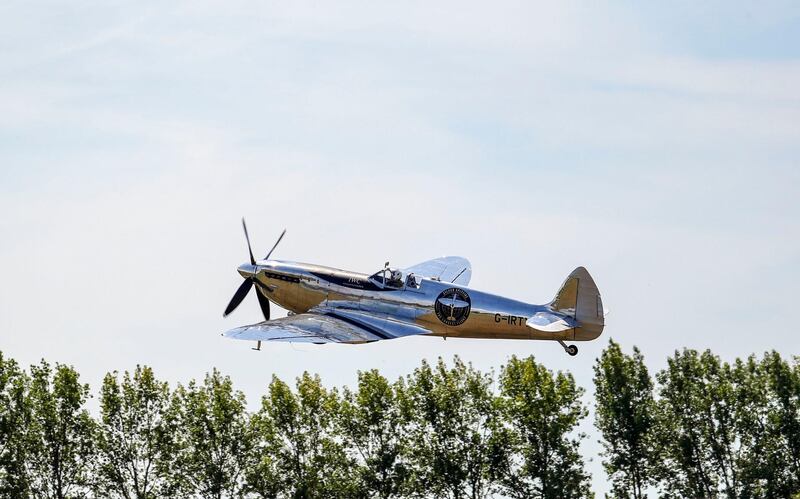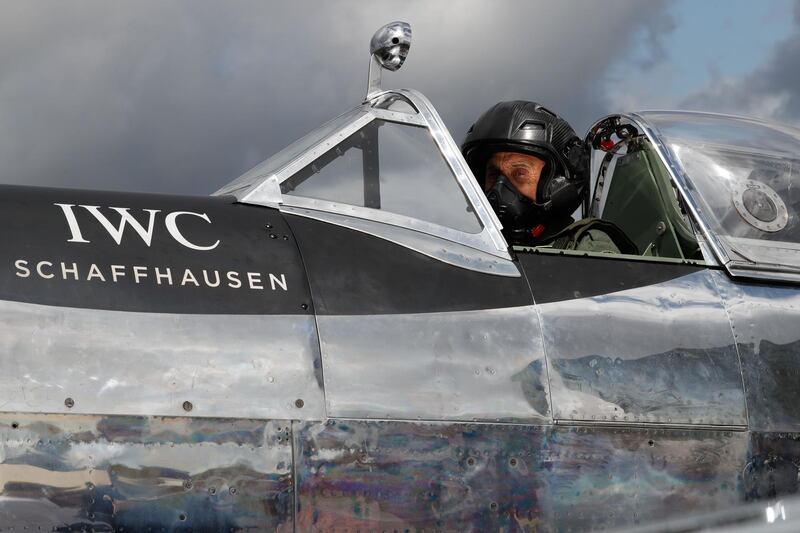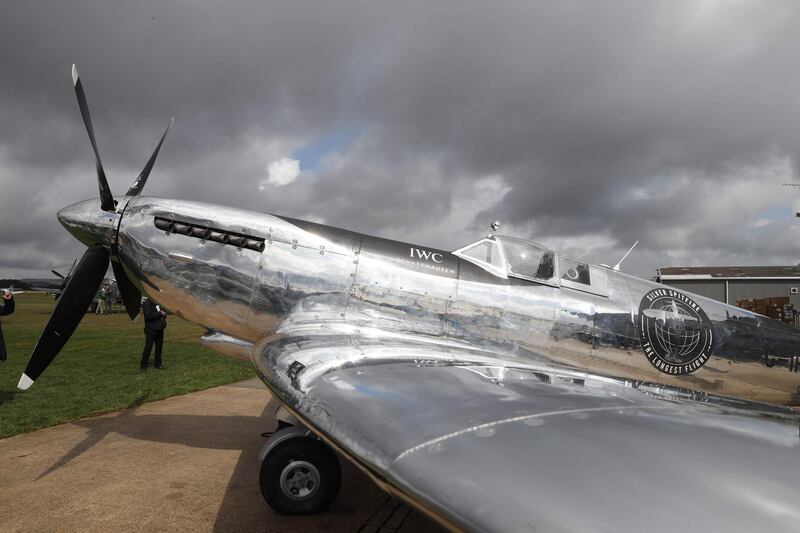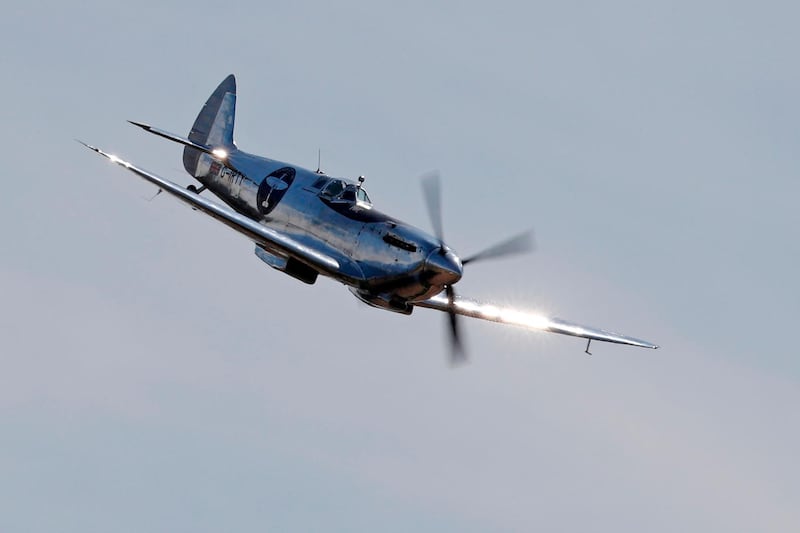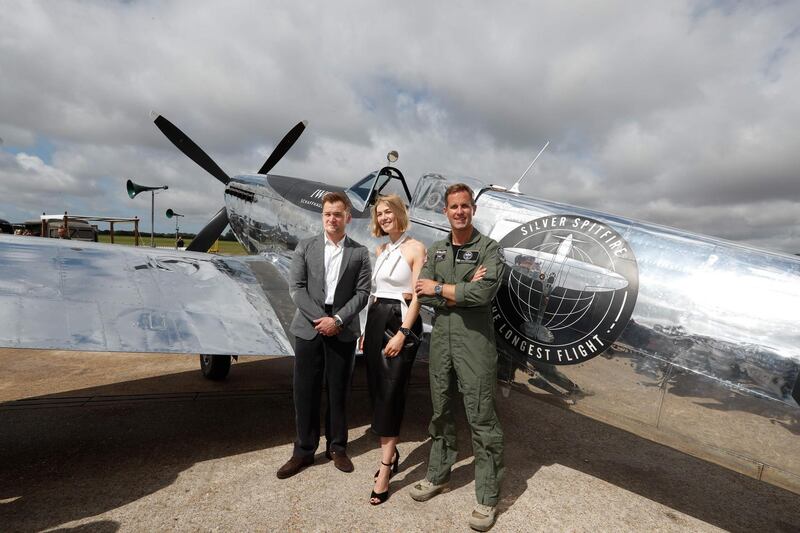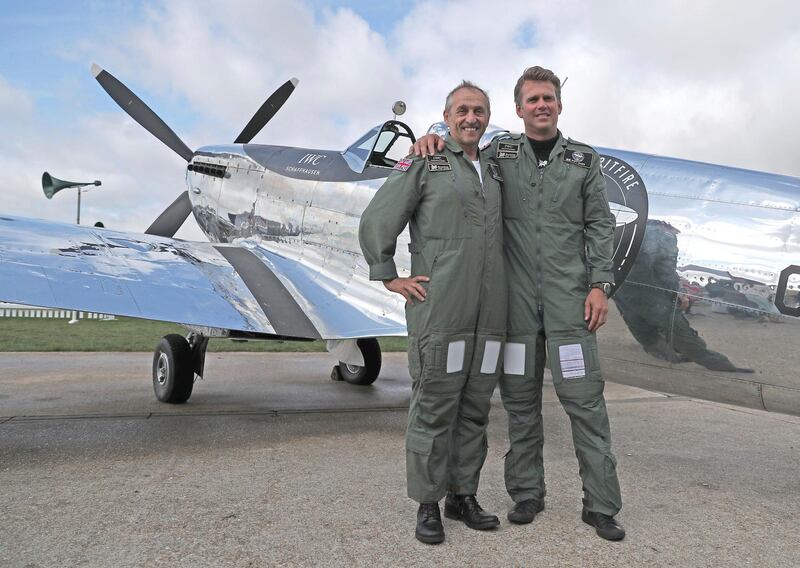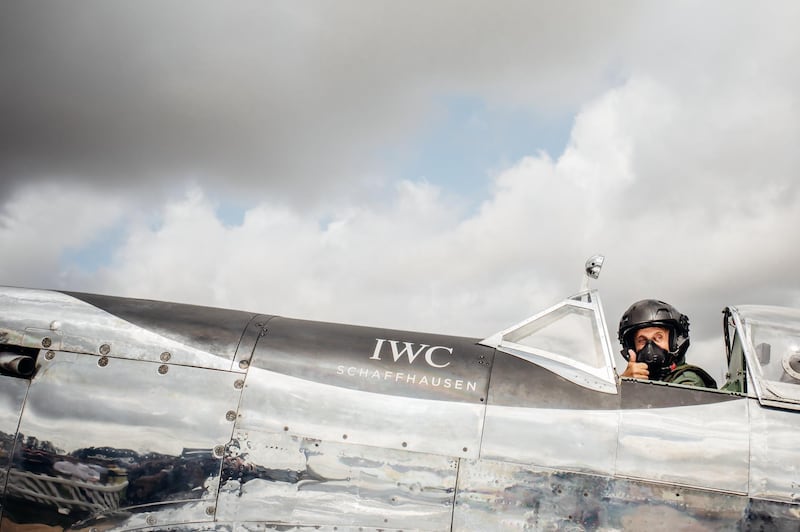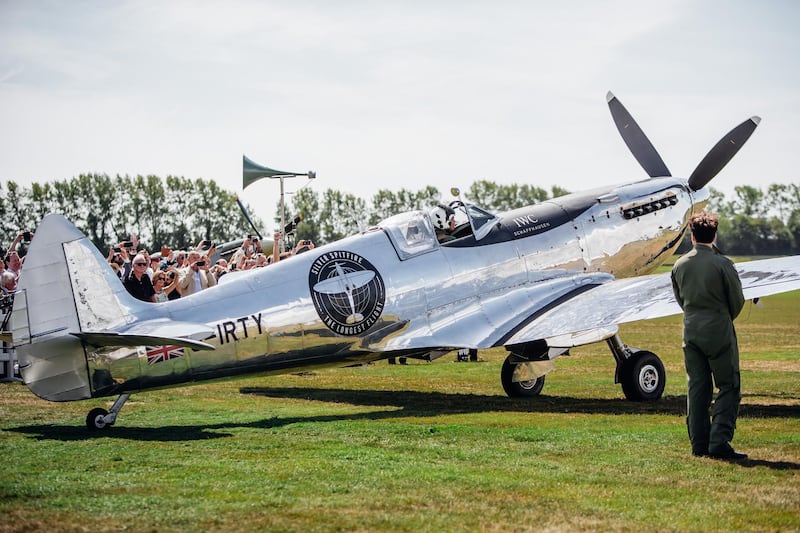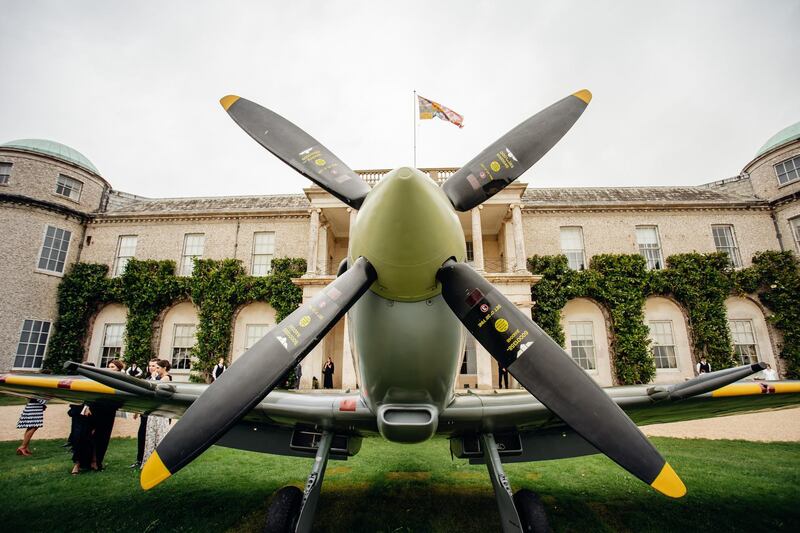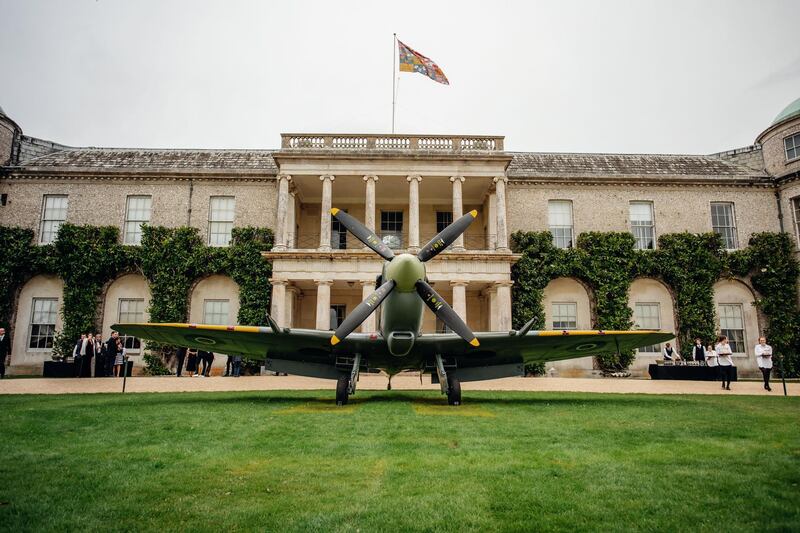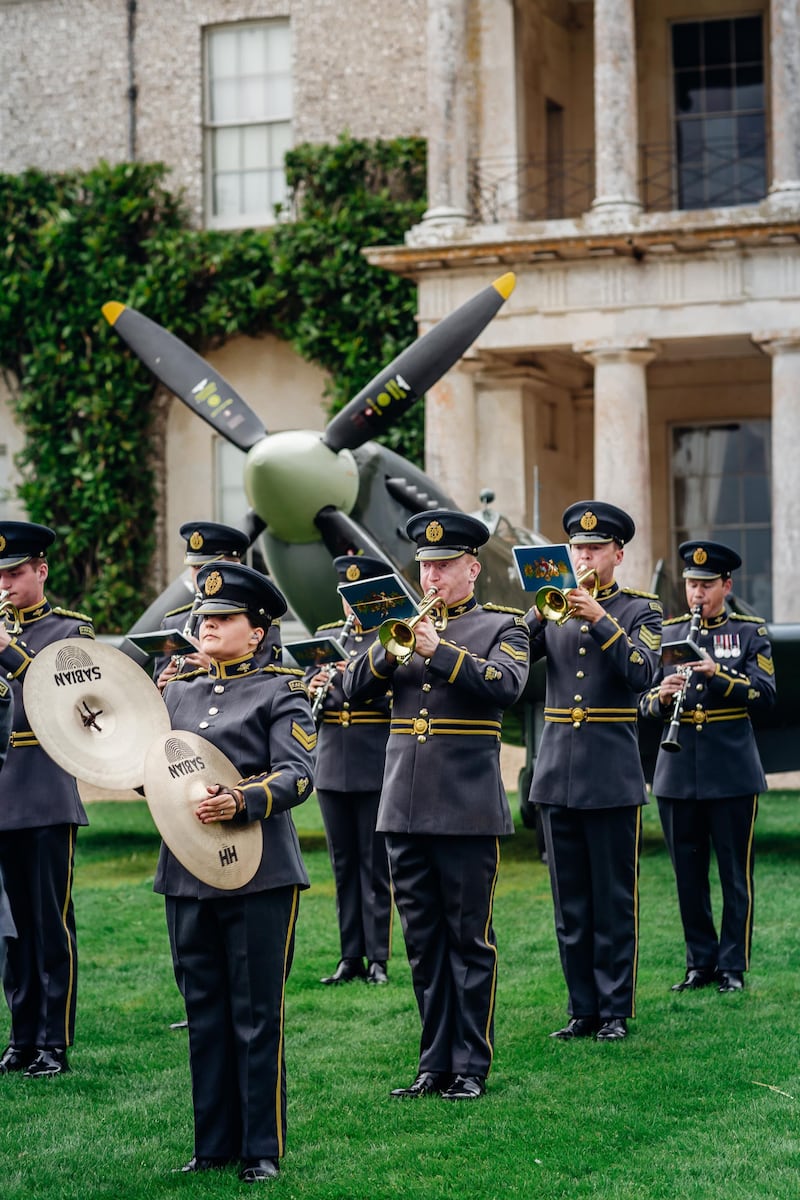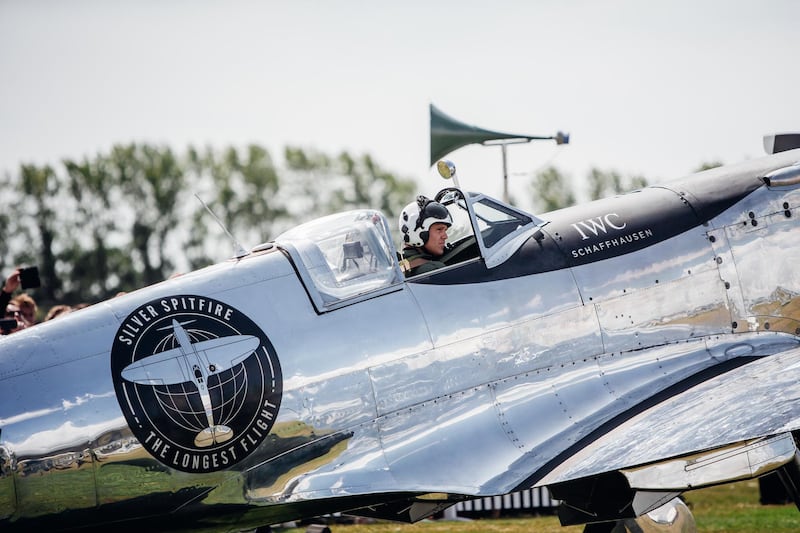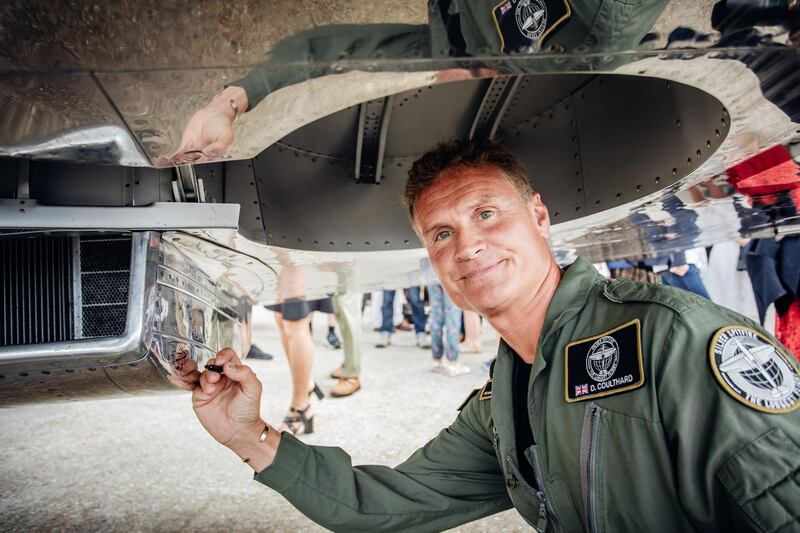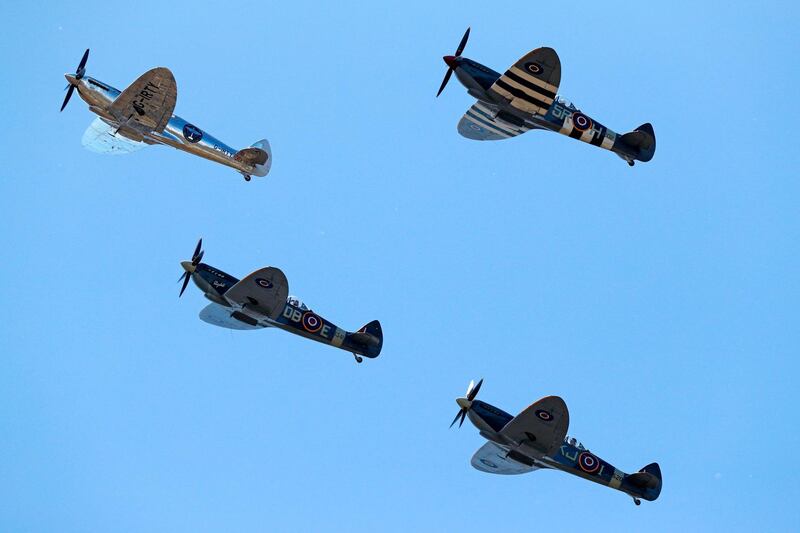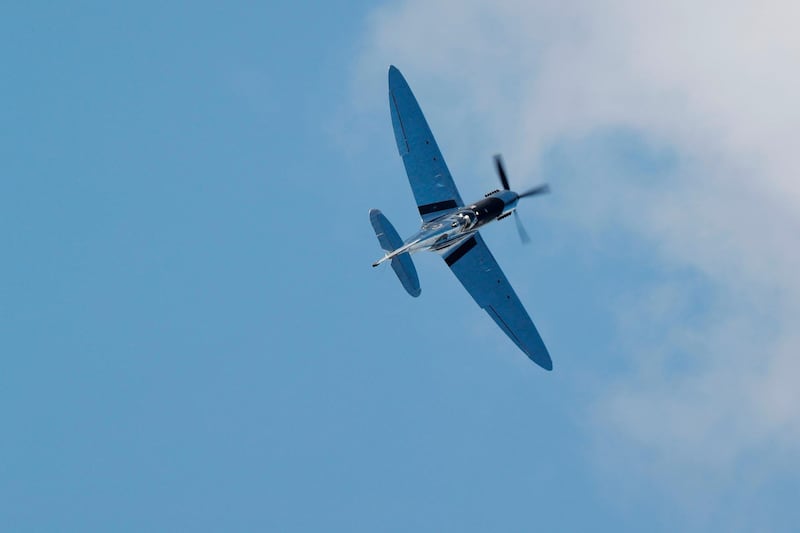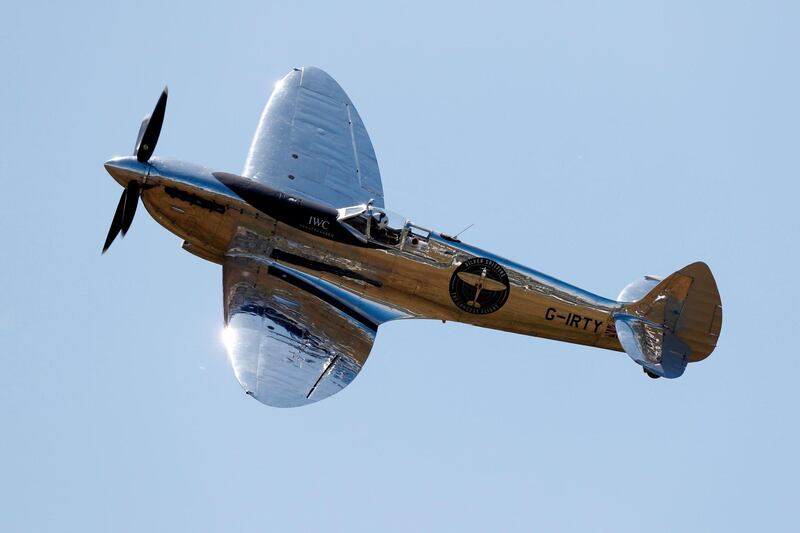It first flew more than 80 years ago, but this week the world's most famous fighter aircraft took to the skies again as it began an ambitious mission to fly around the world, a journey that will include a stop in Abu Dhabi.
A restored Mark IX Supermarine Spitfire began its epic flight on Monday by heading north towards Greenland, where the aircraft and its two British pilots spent last night, and will reach Canada by the weekend.
Heading west across North America, Russia, then Asia, the Spitfire will arrive at Al Bateen Executive Airport on November 4, according to its flight plan, the first in a series of stops in the Arabian Gulf.
The Silver Spitfire, which got its name because the aircraft was stripped down to its original aluminium skin and polished, will land in 100 destinations along its 43,450-kilometre trip.
But the project, which has been called The Longest Journey, is not without its hazards. The Spitfire has a range of a little under 500km, meaning the pilots must fly over land as much as possible.
To reach Abu Dhabi, it will pass through Indian and Pakistani air space, while the Pacific Ocean is tackled at its narrowest point – the 82km Bering Strait between Alaska and Russia.
Even after its restoration, the Silver Spitfire is well past pensionable age. "The question now is: can we nurse it around?" asked Steve Brooks, 58, one of the pilots who will share the responsibility of flying the aircraft.
Other challenges include weather and obtaining the right fuel, known as aviation gasoline, or Avgas, which is not available in some countries. But there is a good supply at Al Bateen.
History suggests the Silver Spitfire will come through with flying colours. The Spitfire made its maiden flight in 1936, but its crowning glory was the Second World War's Battle of Britain in 1940, when the aircraft proved a deadly opponent to the German air force, the Luftwaffe. Adolf Hitler wanted to destroy the Royal Air Force to make way for his planned invasion of the UK, but that plan was defeated.
In those tense weeks of aerial combat, described by Winston Churchill as Britain's "finest hour", the Spitfire's speed and manoeuvrability gave it a vital edge over German aircraft, which included the Messerschmitt and Stuka, even if another RAF fighter, the Hawker Hurricane, shot down more enemy planes.
When one of Germany's top pilots, Adolf Galland, was asked by Luftwaffe commander Hermann Goering what was needed to ensure victory over Britain, Galland replied: "A squadron of Spitfires."
The Longest Journey is being made by a Spitfire from 1943, built at the Castle Bromwich factory in the English Midlands, with improved speed and altitude to take on the latest German fighters at the time. It flew sorties over Europe until 1944, when it was damaged in a crash landing. During its wartime service, the Silver Spitfire was flown by pilots from Australia, Canada, Norway, Trinidad and Britain.
After repairs, the fighter was used for ground attacks after the D-Day landings, and at the end of the war was given to the Dutch air force, with which it ended its service.
After spending 50 years as a museum exhibit in the Netherlands, the aircraft was returned to Britain in 2006 to be worked on by specialists at the Aircraft Restoration Company. Last month, flew for the first time since the 1950s.
Brooks and Matt Jones, 45, will take turns flying it around the world. They will be supported by a chase plane.
As combat aircraft, the Spitfire served in air forces from Turkey to Thailand. There were also Spitfire-on-Spitfire dogfights in the 1948 Arab-Israeli War, with both Egypt and Israel using the fighter in combat.
More than 20,000 were built, but it is estimated that only 60 are still capable of flight.
While the Arabian Gulf was not a combat zone in the Second World War, the region has a surprising number of connections with Spitfires.
Three aircraft were donated to the region as the result of a fund-raising effort in Bahrain, Kuwait and Oman and had those countries' names on their fuselages.
Spitfire parts were also sent by ship to Basra by Britain, who gave them to the Soviet Union in the fight against Hitler. The aircraft were assembled and then flown over the border to be collected by Russian pilots.
Sharjah was also a RAF base during the war and records suggest that at least one Spitfire crash landed in the emirate in July 1945. The aircraft was damaged beyond repair
and it may be buried beneath the city.
